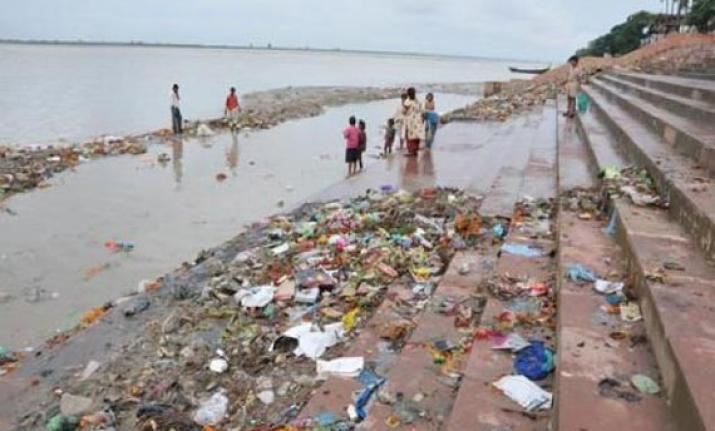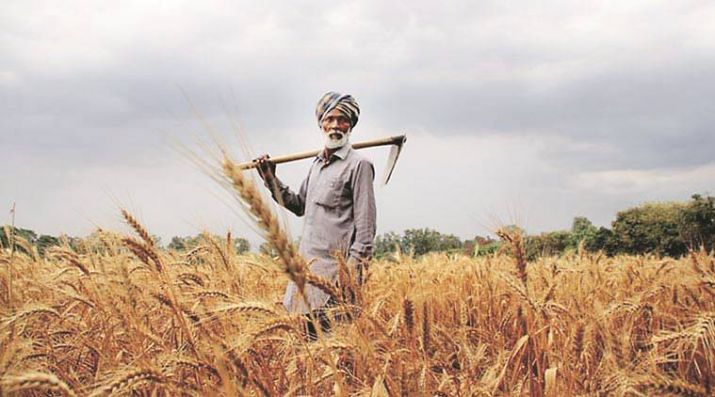ENVIRONMENT
Ganges is a river whose protection has captured the national imagination but without sustained initiatives and state machinery it can just remain a partial effort.
Bharat Dogra is a freelance journalist who has been involved with several social movements and initiatives.
There are just a few priorities of the Union government which are likely to get as much public support as the protection of the river Ganges. Unfortunately, despite the repeated declarations of high prioritization of this objective by the Union government the details of its actual implementation have been badly messed up in recent times.

In fact, several persons closely involved with the protection of the river Ganges who had earlier placed high hopes in the present Union government are now very unhappy and distressed with the actual state of affairs.
The story of this mess-up starts right where the Ganges starts its journey that is near Gangotri, Uttarakahnd. Despite the wide acceptance of this area as a highly sensitive eco-zone deforestation has become a big worry in this region.
A large number of trees have been cut in recent times in this upper catchment of the Ganges River while an even larger number of trees have been marked for felling.
This is partly due to the thoughtlessly implemented excessive widening of roads and partly due to other factors. Local experienced people point out that traffic bottlenecks can be sorted out by careful planning with the involvement of local people to identify the difficult points and then deal with them in various ways.
Reports prepared by senior Gandhian social activists of the region including Suresh Bhai and Radha Bhatt reveal that tens of thousands of trees are in danger of being cut in high Eco-sensitive areas while a large number have been cut already. They point out that felling of one tree in careless ways on these slopes damages several other trees as well.
What is more, the massive rubble and debris generated in the process of cutting hills for indiscriminate construction work as well as the use of explosives for this purpose is frequently finding its way in the river and its tributaries.
The entire process is making the disaster prone region even more prone to landslides which in turn can lead to the deposition of more debris in the main river and its tributaries thereby increasing the possibility of floods and flash floods.
Tens of thousands of trees are in danger of being cut in high Eco-sensitive areas while a large number have been cut already.
It has been a long-standing demand of environmentalists particularly those involved more closely with the protection of Ganges River that the construction of ecologically disruptive hydro projects in the Himalayan reaches of the Ganges and its tributaries should be avoided.
This demand was strengthened after the highly disruptive impacts of the Tehri Dam Project were realized to a better extent. Local people who have been displaced or whose lives have been disrupted by these projects also support this demand.
Unfortunately the Union government in recent times has not been sensitive towards this demand. In fact even the easier- to- accept demands of checking mining activities in and around the main river and its tributaries did not get adequate attention. Now the ecological problems and vulnerability to disasters are likely to get much worse because of the large-scale felling of trees.
These issues are also connected to decreasing the pollution of the river as the silt brought from Himalayan rivers is known to have water purifying properties and the trapping of this silt in dams and barrages is contributing to reducing the famed purity of Ganges water in downstream areas. In addition there has been significant failure in reducing the levels of domestic and industrial pollution.
The emphasis has remained on more expensive sewage treatment plants requiring lots of money and electricity while less expensive, more energy-saving options like those suggested by the Varanasi-based Sankatmochan Foundation in the past have not received the much-deserved attention.
The continuing emphasis on more capital-intensive and expensive technologies has implied that simpler, cheaper, more innovative and participatory approaches to reducing pollution did not get a fair chance.

The more visible work like beautification of ghats near the river has been publicized at many places but this can be called only of cosmetic importance if the more basic work of ensuring adequate water in the river and its tributaries does not get proper attention or if the efforts made in this direction are not successful.
In important places like Varanasi this seems to be the reality that the more basic work is being neglected while the cosmetic kind of work gets a lot of publicity.
However even within this limited framework questions are being raised regarding the details of the planning and implementation.
In Varanasi many people believe strongly that many demolitions could have been avoided and the ghat improvement work could have been taking up in a better planned way.
These demolitions are also linked up with the loss of livelihood for several people in the city. Several old residents of the city including several priests have complained that the traditions and heritage of the city are being ignored while taking up the so-called improvement works and in the process a lot of harm is being done to the essence of the city and the environs of the river and river-banks.
The wider reality is that the Union government policies lack a proper and comprehensive vision of what exactly is meant by protection of rivers and river-systems.
Due to the lack of this understanding highly disruptive schemes like national river-links are being emphasized once again without even realizing the consequences of this although several eminent experts including former senior government officials have drawn attention to these adverse impacts.
It is high time that instead of marching ahead in this foolhardy way the government makes a careful review of where its ill-planned river policies are going so that remedial steps can be taken before it is too late.














